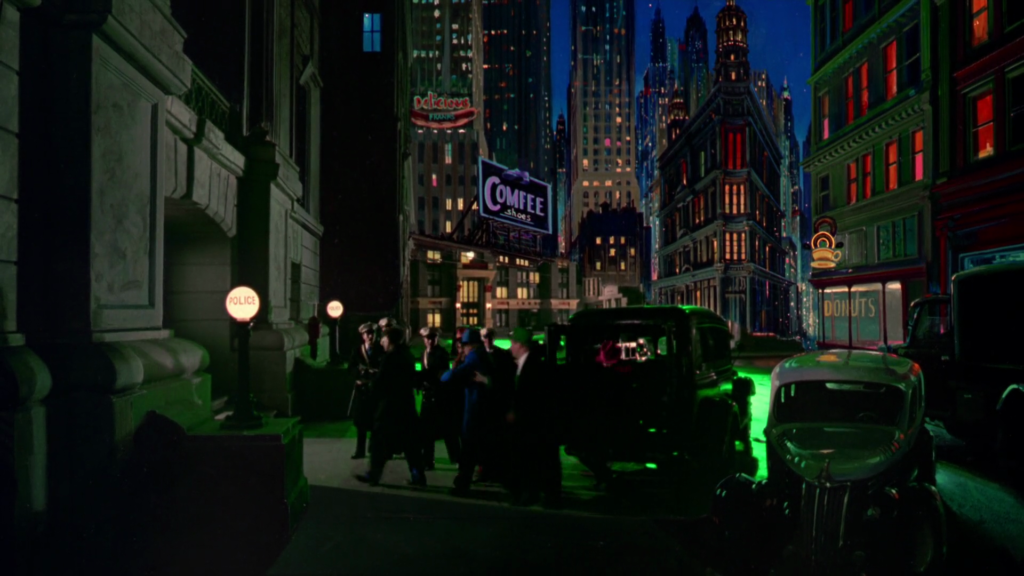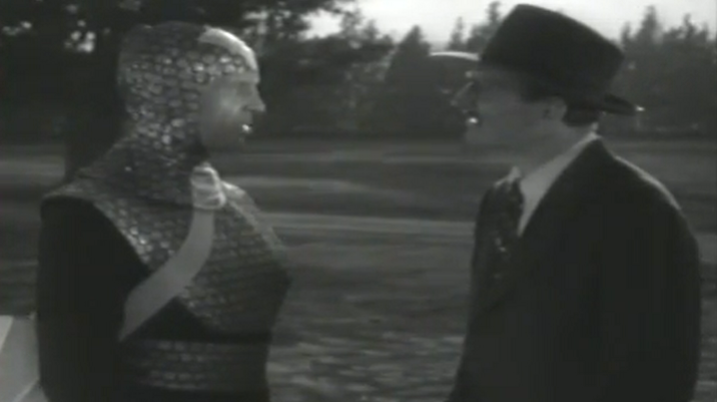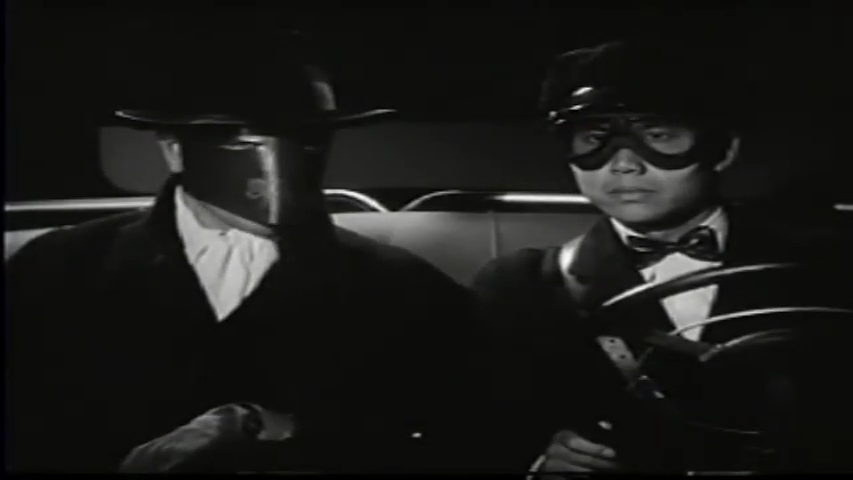-
#399 – Dick Tracy (1990)
Dick Tracy (1990)
Film review #399
Director: Warren Beatty
SYNOPSIS: Detective Dick Tracy is busy attempting to clean up the city of the criminals that are terrorising it. He rescues a homeless kid from a criminal, and ends up having to look after him along with his girlfriend Tess Trueheart. Meanwhile, Big Boy Caprice has united all of the city’s mobsters under his rule, and the only way Tracy can get him locked up is to convince Breathless Mahoney to testify against him, who seems to have her own agenda altogether…
THOUGHTS/ANALYSIS: Dick Tracy is a 1990 film based on the comic strips of the same name created by Chester Gould. The film starts out with Dick Tracy on the trail of criminal Lips, who turns up dead. Tracy suspects the work of Big Boy Caprice, but his evidence hinges on the testimony of Breathless Mahoney, who witnessed Lips being buried in cement (Tracy found one of her earrings at the scene of the crime). Tracy also manages to apprehend a nameless kid who is pick-pocketing and decides to have the kid stay with him. Meanwhile Big Boy Caprice has managed to unite all of the city’s criminals under his rule, and Tracy has to find a way to put a stop to them. The story is…well, there’s lots of it. On one hand, it adds in a lot of the characters and ideas from the comics, but on the other, it adds too many without exploring them in depth; it just throws the characters in with a bunch of others with no time to really develop them. The opening of the film basically throws the viewer into the deep end with Tracy trying to apprehend these criminals that he clearly has a history with, but we aren’t given much of an insight into it and why Tracy is so intent on pursuing these criminals at all costs. In one sense, in keeping with the comic strip origins, not everything needs to be explained, nor for a reader to read every single comic strip to understand what’s going on. In the case of a self-contained film, however, the motivations of the characters really need to be at least signposted through recaps, flashbacks or some other narrative device. The film is simple enough to follow, and doesn’t have too many interruptions to its flow, but there’s such an interesting setting and cast of characters that aren’t delved into that it is a little disappointing. At least the film sticks to the comic’s origins in the mobster-filled, crime-noir genre rather than going into the sci-fi stories involving aliens living on the Moon that the comic went into in the sixties. The only sci-fi element that shows up is the communicator watch that Tracy wears, and that doesn’t really stand out too much from the setting. A small problem I have with the ending is that Caprice ends up getting killed, which I think would have been better if instead he was arrested and sent to jail, as that’s what Tracy’s goal was throughout the whole film.
The film’s biggest strength is by far its cinematography and style. I don’t think there is anything else like it (especially at the time it was released). The backgrounds and cityscape shots are large scale matte paintings done in a traditional comic perspective that are brought to life with amazing detail and colour. The colour on the whole is incredibly striking, with high contrast props, sets and costumes making individual elements stand out in shots. For example, Tracy’s distinctive cream coloured hat and coat are saturated and give him a commanding presence in the dark shots of the city at night. Every character too wears a similar high saturated colour, making them recognisable and visually appealing. In doing so, the film overcomes the paradox of having a crime-noir in full colour by replicating the high contrast of ‘noir’ through highly saturated colour. Not only this, but it also manages to pay homage to the typically flat colours associated with comic strips. All of this is a remarkable achievement that also doesn’t feel very dated. The other striking element of the film’s style is it’s use of prostheses and make-up to give the villain’s comic book proportions. For example, Pruneface has these huge wrinkles covering his face that make him look like a prune, Flattop has a…flat top of his head. It’s cartoony, but they all still have a menacing aura about them thanks to the exceptional work of the prosthesis. If you’re going to remember this film for anything, then it is its style and vision which will stay with you.
The characters themselves definitely have plenty of personality, though as mentioned there could do with exploring in greater depth some of these interesting-looking people. Tracy, played by Warren Beatty, who also directed the film, feels like he’s channelling Harrison Ford (particularly Indiana Jones) in his performance. Sometimes he is straight-laced, sometimes he is quick-thinking and action-oriented. Al Pacino as Big Boy Caprice has a commanding presence and the prostheses that fills out his body compliments that nicely. Breathless Mahoney is played by Madonna, who turns in an alluring performance as well as performing some original cabaret songs that hit the mark. The mixture of drama and comedy again is executed well, with a good amount of visual gags that are easy to miss given Tracy’s often straight-faced response. His interactions with the character Mumbles (who mumbles everything he says) is in particular a chance for the film to strike a humourous note.
Overall, Dick Tracy offers a visual treat that manages to pull off the aesthetics of crime-noir and comic book drama with a striking use of colour and convincing make-up that situates every element of the film perfectly in the world it creates. The result is a memorable visual experience coupled with some dramatic and over-the-top performances. The story suffers from having too much going on and not enough depth to the most important elements, but on the whole it is still enjoyable enough to sit through.
-
#398 – Flying Disc Man from Mars (1950)
Flying Disc Man from Mars (1950)
Film review #398
Director: Fred C. Brannon
SYNOPSIS: Scientist Dr. Bryant goes to investigate a strange aircraft that has has crashed to Earth. There, he finds that a Man named Mato who has come from Mars with the aim of placing the Earth under Mars’ absolute dictatorship. He blackmails Dr. Bryant in this scheme, knowing about his secret past as a Nazi scientist during the war, into using his scientific knowledge and resources to construct weapons to achieve this task. Meanwhile, Kent Fowler, who owns a security company that uses planes, and who was also hired by Bryant to act as security around his factory before the ship crashed, must find a way to the criminal’s plans to steal the components necessary to build atomic weaponry.
THOUGHTS/ANALYSIS: Flying Disc Man from Mars is a 1950 movie serial composed of twelve chapters. The first chapter opens up strongly (as they all do in order to get viewers into the theatre and subsequently back for the remaining chapters), as Dr. Bryant, a scientist and owner of a manufacturing company, hires Kent Fowler, the owner of security company that patrols in a fleet of aeroplanes, to patrol the grounds of his factory, as there have been sightings of strange ships in the sky recently. Bryant sees a ship fall out of the sky and crash nearby, prompting him to go and investigate. When he arrives, he finds a man emerge from the plane called Mato, who claims to be from Mars and has been sent on a mission to conquer Earth to be ruled by the Mars dictatorship, as the Earth’s experimentation with atomic weapons has been found too dangerous to continue, and would have severe repercussions on the solar system. Mato knows about Dr. Bryant’s past of being a Nazi scientist during the war (having intercepted radio communications from Mars), and blackmails him into helping him conquer the earth (and appealing to his inner Nazi by explaining how reasonable it would be to have the use of atomic weapons controlled by an absolute dictatorship I guess).
-
#397 – Dick Tracy meets Gruesome (1947)
Dick Tracy Meets Gruesome (1947)
Film review #397
Director: John Rawlins
SYNOPSIS: A bank robbery that ends in a murder means that homicide detective Dick Tracy gets put on the case. The robbery, which involved using a special gas that froze everyone in place while the robbery was carried out. Meanwhile, the criminal known as Gruesome, who carried out the robbery, is still at large and continuing to carry out crimes…
THOUGHTS/ANALYSIS: Dick Tracy Meets Gruesome is a 1947 feature film, as well as the fourth and final film in the Dick Tracy film series. The film starts off with a criminal named Gruesome getting out of prison and going to see fellow criminal Melody about a job. He visits a scientist where he stumbles upon a gas that he inhales. As he tries to make it back to Melody at the bar, he falls unconscious at the door, where he is picked up by Pat Patton, detective and Dick Tracy’s partner. He is seemingly dead, but he wakes up in the morgue and knocks out Pat before he escapes. Gruesome gets a hold of the gas again and uses it to rob a bank by freezing everyone inside. Coincidentally, Dick Tracy’s girlfriend Tess is in the bank and witnesses the robbery, as she is in a phone booth and unaffected by the gas. When a guard is shot and killed by the robbers as they flee, Dick Tracy becomes involved in the case and attempts to track down the robbers before the press print the story and they flee town. The content is again very similar to the previous three films in the series, with a balance between investigation and action. This film seems to pack a lot more content into it though, and definitely moves around to focus on a lot more elements. As such I don’t think it flows quite as smoothly as the others, but it’s not too much of an issue. One other main difference is the more science-fiction element of the freezing gas, which is something which isn’t a part of the previous films. It does stand out from the noir-crime and somewhat down-to-earth style of the film, but then again it still follows its comic book roots with the dramatic angles and silly naming of characters, so it’s hardly a world-breaking element.
The villain this time is Gruesome, a man who has recently come out of prison (whether he has been released or escaped is left ambiguous) and immediately gets back into a life of crime. Gruesome is portrayed by Boris Karloff, the famous horror movie actor best known for his role in 1931′s Frankenstein as the Monster. He obviously knows how to play a good villain; with his cold, threatening stare that speaks more than any words that he could say. Pat Patton even exclaims that Gruesome looks like Boris Karloff, which is a bit of an odd fourth-wall-breaking moment. However because of his recognisable appearance, Gruesome is probably the most memorable of the Dick Tracy villains. In terms of the other characters, Ralph Byrd returns as Dick Tracy, along with familiar characters Pat Patton and Tess Trueheart. The minor characters, in keeping with the style of these films, all have names relating to their profession, such as the scientist Dr. A Tomic. It’s a bit silly, but as mentioned it is in keeping with the original comic strip, and finely balances the gritty crime-noir with a mixture of slapstick comedy and comic-esque camera angles.
Overall, Dick Tracy meets Gruesome continues the work that the previous films did, without much else to say. The addition of a more science-fiction focus changes things up a little, although it does feel a little out of place compared to the rest of the series. Boris Karloff provides a menacing villain that is memorable and interesting to follow, and while the series’ trademark of mixing action, investigation, noir and comedy elements probably veers more towards a light-hearted approach than its predecessors, it still keeps close to the successful formula it has hit on of blending these elements of different genres into a short but entertaining watch.
-
#396 – The Green Hornet Strikes Again! (1940)
The Green Hornet Strikes Again! (1940)
Film review #396
Directors: Ford Beebe, John Rawlins
SYNOPSIS: The Green Hornet, a masked vigilante is once again on the case of a racketeering ring that is terrorising the city and undermining the country’s military productions. Britt Reid, the owner of The Sentinel newspaper, investigates these racketeering rings, and disguised as the Green Hornet puts a stop to their operations, all the while having to avoid his secret identity being uncovered by his friends and co-workers…
THOUGHTS/ANALYSIS: The Green Hornet Strikes Again! is a 1940 movie serial based on the The Green Hornet radio drama and a sequel to the movie serial of the same name. The story once again centres around Britt Reid, the owner of The Sentinel newspaper, who is also secretly the masked vigilante “The Green Hornet.” While Reid investigates the crime rackets in the city at the newspaper, as The Green Hornet he puts a stop to them with the information he has received through his investigations. This only really needs to be a short review, as most of what can be said about this serial was already said in my review of its predecessor. The story is very similar with The Green Hornet once again going after racketeering operations, with a new one being the focus of nearly every episode, which means there’s a bit of variety to the plot. This does make the serial stand out from others in the format since most of them have once overarching plot, linking the chapters by cliffhanger endings which are directly resolved at the beginning of the next chapter. Although The Green Hornet Strikes Again! somewhat does this, the cliffhangers don’t have a similar impact, and mostly just wrap things up before moving on to a new story. The overarching plot concerning the crime syndicate is a bit more substantial than the previous serial, with an overall villain controlling things, but it’s not a massive change. Nevertheless, there’s plenty of action with The Green Hornet, and intrigue with Reid’s investigations, so it manages to switch things up to keep them interesting. It should also be noted that is one of the longest serials, clocking in at nearly five hours and fifteen chapters, so that variety comes in handy.
Being released less than a year after the original, this sequel manages to return all the sets and cast as if it was almost a direct continuation. Everyone has a specific role to play, from the heroic Reid, his driver Kato, Michael Axford being the comic relief, and so on. The acting isn’t too bad, but again like its predecessor, the dialogue feels very stiff and unnatural at some points, like the actors are just reciting lines without any natural pacing or emotion. The movie serial format is known for sticking to the tropes of its format, and The Green Hornet Strikes Back! is no exception. However, it is sticking to the formula of its predecessor, which deviated from the format in having more stand-alone episodes rather than dragging out one overarching story. With this in mind it is still a good example of the format, with interesting characters, good action and intriguing investigations that have a decent amount of entertainment value.








































